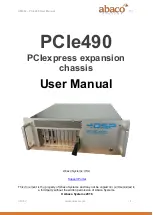
1-3
Cisco ASA Series CLI Configuration Guide
Chapter 1 Configuring Threat Detection
Configuring Basic Threat Detection Statistics
For each received event, the ASA checks the average and burst rate limits; if both rates are exceeded,
then the ASA sends two separate system messages, with a maximum of one message for each rate type
per burst period.
Basic threat detection affects performance only when there are drops or potential threats; even in this
scenario, the performance impact is insignificant.
Guidelines and Limitations
This section includes the guidelines and limitations for this feature:
Security Context Guidelines
Supported in single mode only. Multiple mode is not supported.
Firewall Mode Guidelines
Supported in routed and transparent firewall mode.
Types of Traffic Monitored
Only through-the-box traffic is monitored; to-the-box traffic is not included in threat detection.
Default Settings
Basic threat detection statistics are enabled by default.
lists the default settings. You can view all these default settings using the
show
running-config all threat-detection
command.
Table 1-1
Basic Threat Detection Default Settings
Packet Drop Reason
Trigger Settings
Average Rate
Burst Rate
•
DoS attack detected
•
Bad packet format
•
Connection limits exceeded
•
Suspicious ICMP packets
detected
100 drops/sec over the last 600
seconds.
400 drops/sec over the last 20
second period.
80 drops/sec over the last 3600
seconds.
320 drops/sec over the last 120
second period.
Scanning attack detected
5 drops/sec over the last 600
seconds.
10 drops/sec over the last 20
second period.
4 drops/sec over the last 3600
seconds.
8 drops/sec over the last 120
second period.
Incomplete session detected such as
TCP SYN attack detected or no data
UDP session attack detected
(combined)
100 drops/sec over the last 600
seconds.
200 drops/sec over the last 20
second period.
80 drops/sec over the last 3600
seconds.
160 drops/sec over the last 120
second period.
Summary of Contents for 5505 - ASA Firewall Edition Bundle
Page 28: ...Glossary GL 24 Cisco ASA Series CLI Configuration Guide ...
Page 61: ...P A R T 1 Getting Started with the ASA ...
Page 62: ......
Page 219: ...P A R T 2 Configuring High Availability and Scalability ...
Page 220: ......
Page 403: ...P A R T 2 Configuring Interfaces ...
Page 404: ......
Page 499: ...P A R T 2 Configuring Basic Settings ...
Page 500: ......
Page 533: ...P A R T 2 Configuring Objects and Access Lists ...
Page 534: ......
Page 601: ...P A R T 2 Configuring IP Routing ...
Page 602: ......
Page 745: ...P A R T 2 Configuring Network Address Translation ...
Page 746: ......
Page 845: ...P A R T 2 Configuring AAA Servers and the Local Database ...
Page 846: ......
Page 981: ...P A R T 2 Configuring Access Control ...
Page 982: ......
Page 1061: ...P A R T 2 Configuring Service Policies Using the Modular Policy Framework ...
Page 1062: ......
Page 1093: ...P A R T 2 Configuring Application Inspection ...
Page 1094: ......
Page 1191: ...P A R T 2 Configuring Unified Communications ...
Page 1192: ......
Page 1333: ...P A R T 2 Configuring Connection Settings and QoS ...
Page 1334: ......
Page 1379: ...P A R T 2 Configuring Advanced Network Protection ...
Page 1380: ......
Page 1475: ...P A R T 2 Configuring Modules ...
Page 1476: ......
Page 1549: ...P A R T 2 Configuring VPN ...
Page 1550: ......
Page 1965: ...P A R T 2 Configuring Logging SNMP and Smart Call Home ...
Page 1966: ......
Page 2059: ...P A R T 2 System Administration ...
Page 2060: ......
Page 2098: ...1 8 Cisco ASA Series CLI Configuration Guide Chapter 1 Troubleshooting Viewing the Coredump ...
Page 2099: ...P A R T 2 Reference ...
Page 2100: ......















































